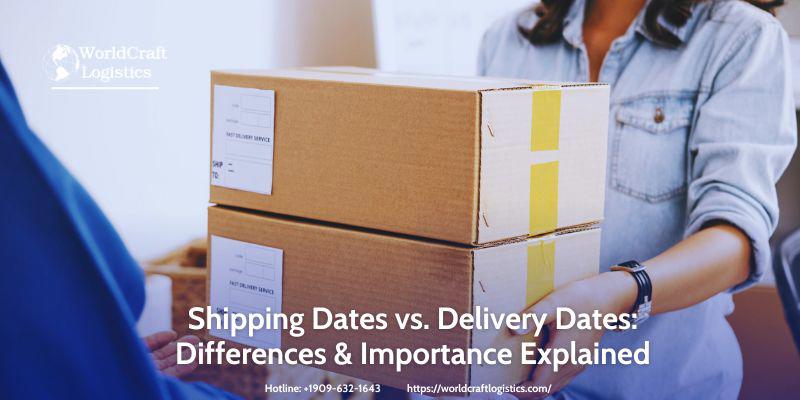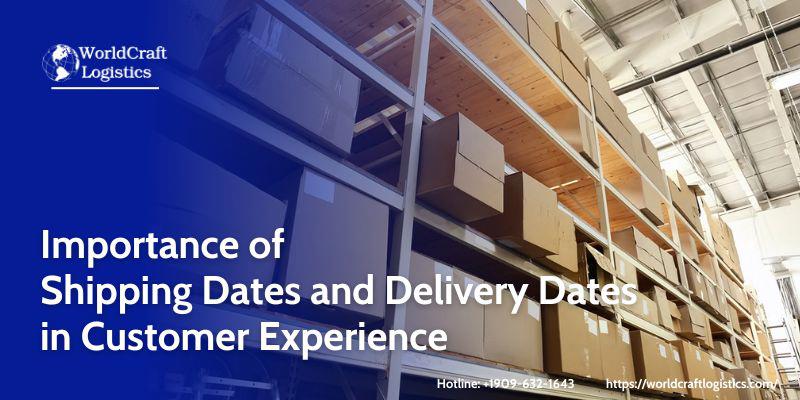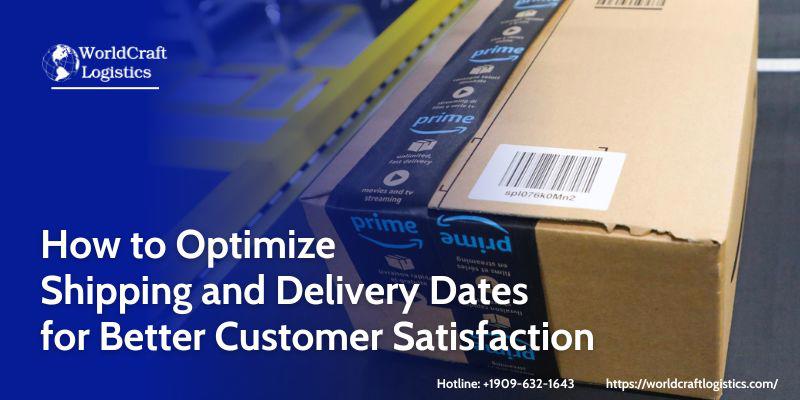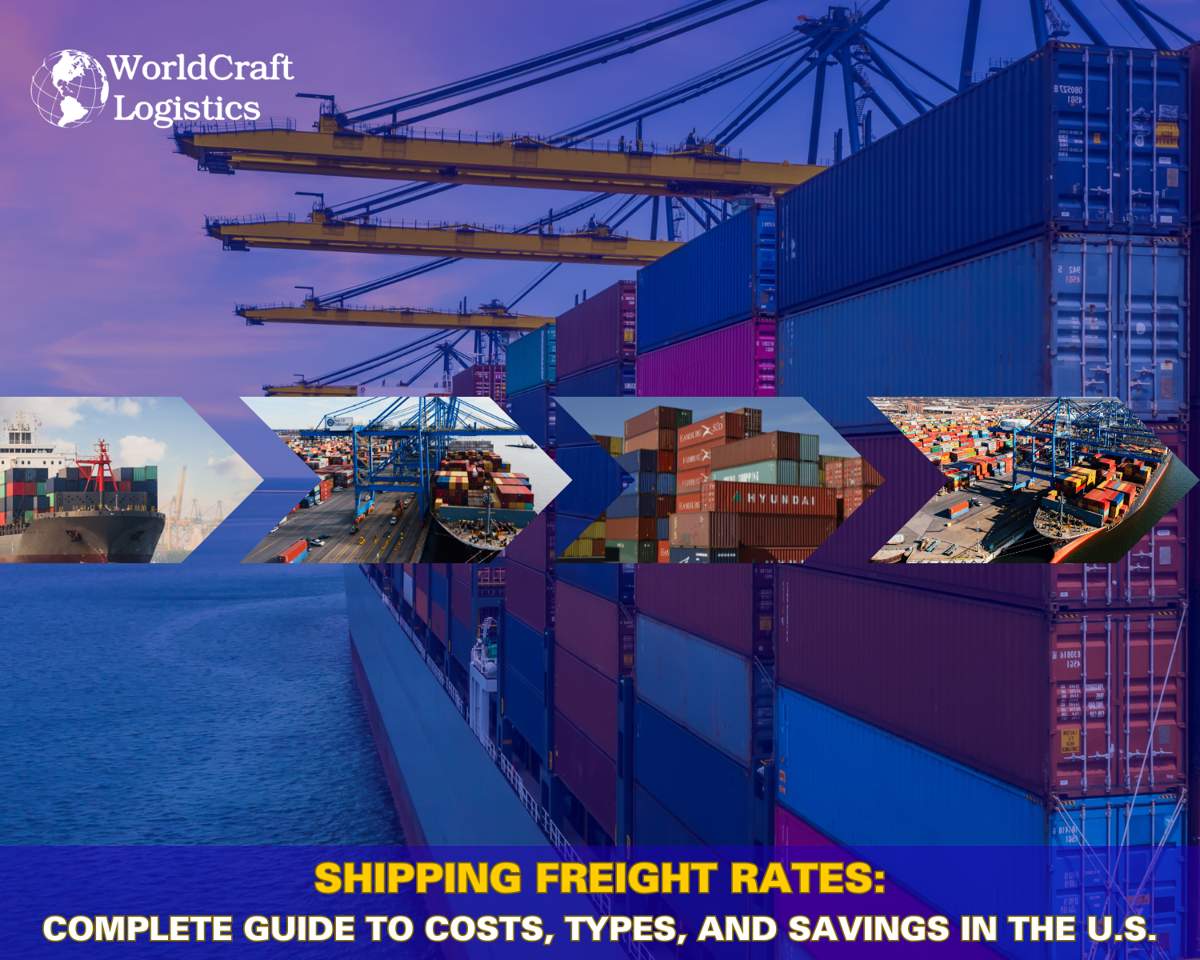
Starting June 1st, 2023 Our warehouse fee will be $0.65/cubic foot per month
In effort to lower the warehouse storage fee during inflation, we have went narrow aisle racking.This construction took us four months but the project is finally completed. With narrow aisle racking, we are able to drop storage by 24%.We as partners will go through this inflation together.
09/03/2024
In the world of logistics and e-commerce, terms like "shipping date" and "delivery date" are commonly used but often misunderstood. These dates are crucial for businesses and customers alike, as they directly impact expectations and satisfaction. Understanding the difference between a shipping date and a delivery date can help manage expectations, improve planning, and enhance overall customer experience.

The shipping date refers to the specific day when a package is handed over to a carrier by the seller or shipper. This is the date when the product physically leaves the warehouse or store and begins its journey to the recipient. The date of shipping is a critical milestone in the order fulfillment process as it marks the point at which the seller has completed their part of the transaction.

In e-commerce and logistics, the ship date meaning is often tied to the point of sale. When an order is placed, the seller provides an estimated shipping date, which indicates when the item will be sent out. This date can be influenced by several factors, including inventory availability, order processing time, and shipping method. Understanding what is shipping date is crucial for businesses to ensure that they meet their customers' expectations and for customers to plan their schedules around the arrival of their orders.
Several factors can influence the shipping date:
Order Processing Time: This includes the time it takes to pick, pack, and prepare the item for shipment. Orders placed late in the day may not ship until the following business day.
Inventory Availability: If an item is out of stock or back-ordered, the date of shipping may be delayed.
Shipping Method: Different shipping methods (standard, expedited, overnight) can affect the shipping date as some carriers have cut-off times for same-day shipping.
Weekends and Holidays: These days are typically non-operational for most carriers, which means that orders placed on or near these days may have a delayed shipping date.
Geographical Location: The proximity of the warehouse to the customer can also influence the shipping date. For example, orders from a nearby warehouse may ship out more quickly.

The delivery date is the anticipated day when the package will arrive at its final destination. This is the day the carrier is expected to deliver the package to the customer’s address. The delivery date is crucial for customers as it dictates when they need to be available to receive the package. For businesses, accurately predicting the delivery date is vital for customer satisfaction.
In e-commerce, the delivery date is often provided at the time of purchase, giving customers an estimated timeframe for when they can expect to receive their order. This date can change due to factors such as shipping delays, weather conditions, and other unforeseen events. Knowing the difference between shipping and delivery dates helps customers understand why an order might take longer to arrive than expected.
Several factors can affect the delivery date:
Carrier Performance: The reliability and speed of the carrier can significantly impact the delivery date. Some carriers are faster and more reliable than others.
Shipping Distance: The distance between the origin and destination plays a crucial role in determining the delivery date. Longer distances typically result in later delivery dates.
Customs Clearance: For international shipments, customs clearance can delay the delivery date due to inspections and duties.
Weather Conditions: Severe weather events such as storms, floods, or snow can cause delays and push the delivery date back.
Recipient Availability: If the recipient is not available to receive the package, the delivery date might be postponed, especially if a signature is required upon delivery.
Other articles you should read to gain new knowledge:
👉 Difference Between Billing and Mailing Address
👉 Single Entry Bond and Continuous Bond: Meaning, the Differences
👉 Prepaid vs. Collect: Explaining the Meanings of Freight Terms

Understanding the key differences between shipping dates and delivery dates is essential for both businesses and customers. Here’s a breakdown:
Shipping Date: This is the date when the seller hands over the package to the carrier. It marks the start of the shipping process.
Delivery Date: This is the date when the carrier is expected to deliver the package to the customer. It marks the end of the shipping process.
Shipping Date: The seller has significant control over the shipping date, as it depends on when they process and ship the order.
Delivery Date: The delivery date is largely controlled by the carrier, influenced by factors like transit time and route efficiency.
Shipping Date: Serves as an indication of when the package was dispatched and starts its journey.
Delivery Date: Provides an estimated time frame for when the package will arrive at its destination.
Shipping Date: Typically communicated to the customer via a confirmation email or order status update.
Delivery Date: Often communicated through tracking updates, allowing customers to monitor the progress of their shipment.

Accurately communicating shipping dates and delivery dates is crucial for maintaining customer satisfaction. Misunderstanding these dates can lead to disappointment, frustration, and negative reviews. Here’s why these dates are so important:
When customers place an order, they often have specific expectations regarding when they will receive their purchase. Clearly communicating the date of shipping and the delivery date helps set realistic expectations, reducing the likelihood of dissatisfaction.
Providing accurate and transparent information about shipping dates and delivery dates builds trust with customers. It shows that the business is reliable and committed to keeping customers informed throughout the shipping process.
Customers are less likely to contact customer service with questions or complaints if they have clear information about their order’s shipping date and delivery date. This reduces the workload on customer service teams and improves overall efficiency.
Satisfied customers are more likely to return for future purchases. By meeting or exceeding expectations with accurate shipping dates and delivery dates, businesses can increase customer loyalty and encourage repeat business.

Despite their importance, there are several common misconceptions about shipping dates and delivery dates. Understanding these misconceptions can help both businesses and customers have a clearer understanding of the order fulfillment process.
One of the most common misconceptions is that the shipping date and delivery date are the same. In reality, these dates represent different stages of the shipping process. The shipping date is when the package is sent out, while the delivery date is when the package is expected to arrive.
Another misconception is that the shipping date guarantees the delivery date. While the shipping date is important, it does not necessarily determine the delivery date. Various factors, such as shipping method, distance, and carrier efficiency, influence the delivery date.
While expedited shipping does typically result in a faster delivery date, it is not a guarantee. External factors like weather delays, customs clearance, and logistical challenges can still affect the final delivery date.

To ensure better customer satisfaction, businesses need to optimize both shipping dates and delivery dates. Here are some strategies:
Providing accurate shipping date estimates based on inventory levels, order processing times, and carrier cut-off times ensures that customers have realistic expectations from the start.
Keep customers informed throughout the shipping process. Automated emails and tracking updates that notify customers of their shipping date and delivery date can significantly improve the customer experience.
Choosing reliable and efficient carriers can positively impact both shipping dates and delivery dates. Research carriers’ performance and reliability before partnering with them to ensure timely deliveries.
Offering customers multiple shipping options, such as standard, expedited, or overnight shipping, allows them to choose a method that best fits their needs. Clearly communicate how each option affects the shipping date and delivery date.
During peak seasons, such as holidays, shipping delays are more common. Plan ahead by increasing inventory, hiring additional staff, and extending order cut-off times to ensure that shipping dates are met and delivery dates are not delayed.
Understanding the difference between shipping dates and delivery dates is crucial for both businesses and customers. While the shipping date marks the beginning of the package's journey, the delivery date represents the end. By accurately communicating these dates and setting realistic expectations, businesses can enhance customer satisfaction, reduce complaints, and increase repeat business. In an increasingly competitive market, optimizing these dates can be a significant factor in a company's success.
SEO
Digital Marketing/SEO Specialist
Simon Mang is an SEO and Digital Marketing expert at Wordcraft Logistics. With many years of experience in the field of digital marketing, he has shaped and built strategies to effectively promote Wordcraft Logistics' online presence. With a deep understanding of the logistics industry, I have shared more than 500 specialized articles on many different topics.

Education
01/05/2025

Education
02/18/2025

Education
01/01/2024

Education
08/28/2024

Education
09/09/2025